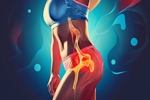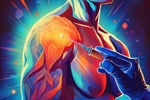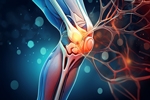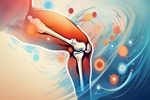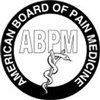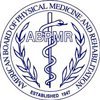Home »
Blog » Sports Medicine
| Stem Cell, PRP, Acupuncture in Queens & Long Island, New York
Sports Medicine | Stem Cell, PRP, Acupuncture in Queens & Long Island, New York
Hip pain can significantly impact daily life, making movement difficult and reducing overall quality of life. Whether caused by arthritis, bursitis, fractures, or muscle strains, identifying the root cause is key to effective treatment. At Precision Pain Care and Rehabilitation, we offer cutting-edge interventional treatments such as nerve blocks, PRP therapy, and spinal cord stimulation to alleviate pain and restore mobility. Learn more about the causes, symptoms, and best treatment options to manage hip pain effectively.
Read more
Struggling with persistent shoulder pain? PRP therapy offers a cutting-edge, non-surgical solution that harnesses the body’s natural healing abilities. By injecting concentrated platelets into the affected area, PRP stimulates tissue repair, reduces inflammation, and enhances joint function. Ideal for conditions like rotator cuff injuries, tendonitis, and osteoarthritis, PRP therapy is a safe and effective alternative to surgery. Learn how this innovative treatment can help you regain mobility and live pain-free.
Read more
Cortisone injections offer effective relief for shoulder pain by reducing inflammation and improving joint mobility. Whether caused by arthritis, bursitis, rotator cuff injuries, or impingement, these injections provide targeted pain management. Learn how they work, what to expect during the procedure, and alternative treatment options to help restore shoulder function.
Read more
Radiofrequency neurotomy of the genicular nerves is a minimally invasive procedure designed to reduce chronic knee pain by disrupting pain signals. Using fluoroscopic guidance, a physician injects local anesthetic and applies radiofrequency energy to target the genicular nerves. This treatment is ideal for patients with knee osteoarthritis who cannot undergo or prefer to avoid joint replacement surgery. Many patients experience significant pain relief and improved mobility, with studies showing better outcomes compared to corticosteroid injections. Radiofrequency neurotomy offers a promising alternative for long-term knee pain management.
Read more
Knee osteoarthritis is a progressive condition that causes pain, stiffness, and swelling, affecting mobility and daily activities. While it worsens over time, early intervention with physical therapy, weight management, and targeted exercises can slow progression and improve joint function. Non-surgical treatments, such as PRP therapy, bracing, and pain management techniques, can help relieve symptoms. In severe cases, surgical options like osteotomy or total knee replacement may be necessary. Understanding risk factors, symptoms, and treatment options is key to maintaining mobility and reducing discomfort.
Read more
Biceps tendonitis is a common condition involving inflammation of the tendons connecting the biceps muscle to the shoulder and elbow. It often develops due to repetitive overhead motions or overuse, leading to irritation and microtears in the tendon. It's prevalent among athletes and individuals engaged in repetitive lifting or throwing activities.
Read more
Smooth knee movement can be affected by this condition. Please find out more about what it means and how to treat it. Knee movement is typically smooth, with the kneecap (patella) gliding within a V-shaped groove at the end of the thigh bone, called the trochlea. This stable movement allows you to stand, walk, and run without issues as the patella moves up and down as you bend and straighten your knee.
Read more
Golf caters to the senior player more than any other sport. There is no age limit, and the handicap system allows an ongoing and organized competition. A good thing, since the population is aging, with nearly twenty percent of Americans - or sixty million people - over the age of 65. Contrary to Mickey Mantle’s observation, “If I had known I was going to live so long, I would have taken better care of myself,” most people today are well nourished, more active, and generally committed to keeping their health in order.
Read more
Low Back Pain in Golfers: Causes and Prevention - Low back pain is a significant concern for many golfers during and after play. This common condition affects both athletes and non-athletes, impacting enjoyment and, in severe cases, leading to pain and disability. Understanding the causes of low back pain is crucial for prevention.
Read more
A hernia is an abnormal protrusion (bulging) of tissue through a space where it doesn’t belong, often causing pain due to the trapped tissue. Common types of hernias include a herniated disk and the traditional "hernia" (in medical terms, an inguinal hernia). In a herniated disk, the tough outer layer (annulus fibrosus) of an intervertebral disk (the cushion between the bones in the spine) tears, allowing the jelly-like inner core (nucleus pulposus) to push through the tear.
Read more
Love this Post? Spread the World





